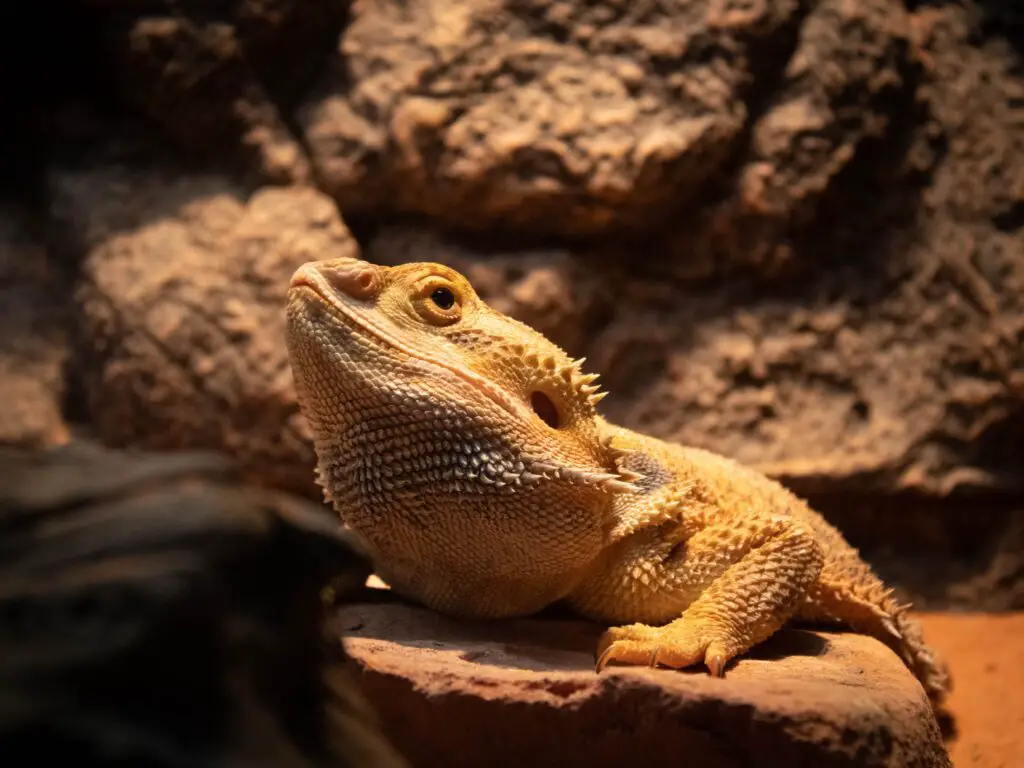Bearded Dragons Prolapse
Bearded dragons prolapse: Bearded dragons, scientifically known as Pogona vitticeps, are fascinating reptiles that have captured the hearts of many reptile enthusiasts. With their unique appearance and docile nature, they have become popular pets worldwide.
However, like any living creature, bearded dragons can also face health issues that require our attention and understanding. One such condition is bearded dragon prolapse.
Definition of Bearded Dragon Prolapse
Prolapse refers to the protrusion or displacement of an organ or tissue from its normal position within the body. In the case of bearded dragons, prolapse typically involves the rectum or reproductive organs becoming inverted or protruding through the vent area. This condition is more commonly observed in female bearded dragons due to their reproductive anatomy.
A bearded dragon prolapse can occur for various reasons, including weak muscles surrounding the vent area or increased internal pressure caused by constipation or straining during egg-laying. The extent of prolapse can range from mild protrusion to severe cases where extensive tissue becomes exposed and vulnerable.
Importance of Understanding and Addressing this Condition
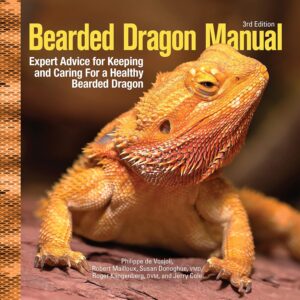 Understanding and addressing bearded dragon prolapse is crucial for several reasons. Firstly, it is essential for pet owners to recognize the signs and symptoms associated with this condition in order to seek appropriate veterinary care promptly. Early intervention increases the chances of successful treatment and reduces potential complications.
Understanding and addressing bearded dragon prolapse is crucial for several reasons. Firstly, it is essential for pet owners to recognize the signs and symptoms associated with this condition in order to seek appropriate veterinary care promptly. Early intervention increases the chances of successful treatment and reduces potential complications.
Furthermore, untreated prolapses can lead to severe health consequences for bearded dragons. When tissues are exposed externally, they become susceptible to infection and trauma.
If left unattended, these wounds can worsen over time and may even lead to life-threatening conditions such as sepsis. By raising awareness about this condition and providing knowledge on its prevention measures, we can help bearded dragon owners create optimal habitats, establish proper husbandry practices, and ensure the long-term well-being of these beloved reptiles.
Understanding Bearded Dragons
Overview of bearded dragons as pets
Bearded dragons, scientifically known as Pogona vitticeps, have become increasingly popular as exotic pets due to their striking appearance and fascinating behaviors. Native to arid regions of Australia, these reptiles have captured the hearts of many reptile enthusiasts and pet owners worldwide. Bearded dragons are relatively small in size compared to other reptiles, typically reaching lengths of 18-24 inches when fully grown.
What sets them apart from other lizard species is their ability to puff out their beard-like throat when threatened or during courtship displays, which adds an extra charm to their already captivating presence. Keeping a bearded dragon as a pet requires careful attention and dedication.
They thrive in spacious enclosures that replicate their natural habitat, consisting of a combination of flat surfaces for basking and climbing structures for exercise. These diurnal creatures are social animals that enjoy human interaction and can often recognize their owners over time.
Being ectothermic animals, they rely on external heat sources to regulate their body temperature effectively. Hence, providing a well-maintained heat gradient within the enclosure is essential for their overall health and wellbeing.
Unique characteristics and needs of bearded dragons
One remarkable characteristic of bearded dragons is their ability to change color depending on various factors such as temperature, mood, or environmental stimuli. This phenomenon occurs due to specialized cells in their skin called chromatophores that contain pigments responsible for altering skin coloration.
In terms of diet, bearded dragons are omnivorous creatures with a varied appetite. Their diet mainly consists of insects such as crickets or roaches during the juvenile stage; however, they gradually shift towards consuming more leafy greens and vegetables as they grow older.
Providing a balanced diet rich in calcium and vitamin D is crucial for maintaining healthy bone growth and preventing metabolic bone disease, which is a common affliction among captive bearded dragons. Furthermore, proper hydration is essential for these desert-dwelling reptiles.
A shallow water dish should always be available, allowing them to drink and soak themselves if desired. Additionally, regular misting of the enclosure is recommended to maintain optimal humidity levels.
Overall, understanding the unique characteristics and meeting the specific needs of bearded dragons are paramount in ensuring their longevity and overall welfare as pets. By providing a suitable enclosure, appropriate nutrition, and attentive care that aligns with their natural habitat requirements, owners can create an enriching environment for these captivating reptiles to thrive in domestic settings.
What is Prolapse?
Prolapse, in general terms, refers to the displacement or protrusion of an internal organ through an external opening. It occurs when the muscles and tissues that normally hold organs in place become weakened or damaged.
In the case of bearded dragons, prolapse typically involves the reproductive or gastrointestinal organs being pushed out through the vent area. This condition can be quite distressing for both the reptile and its owner, as it can cause discomfort, pain, and potential complications if not promptly addressed.
Types of Prolapse that can occur in Bearded Dragons
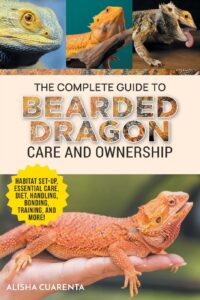 There are two primary types of prolapse that can affect bearded dragons: cloacal prolapse and hemipenal prolapse. Cloacal prolapse is more commonly observed in female bearded dragons.
There are two primary types of prolapse that can affect bearded dragons: cloacal prolapse and hemipenal prolapse. Cloacal prolapse is more commonly observed in female bearded dragons.
The cloaca is a common chamber where waste products from the digestive system, urinary system, and reproductive system are expelled. When this chamber becomes irritated or inflamed due to various factors such as straining during egg-laying or poor muscle tone, it may result in cloacal prolapse.
This condition is identified by the presence of tissue protruding from the vent area. Hemipenal prolapse primarily affects male bearded dragons since they possess two hemipenes used for reproduction.
Hemipenal prolapse occurs when one or both hemipenes become everted or turned inside out due to excessive pressure during mating attempts or other factors such as forceful defecation. It is characterized by a red mass bulging from the vent area.
It is crucial to differentiate between these types of prolapses since treatment approaches may vary depending on which organ is affected. Prompt identification and intervention are necessary to prevent further damage and ensure a successful recovery for these beloved reptiles.
Causes of Bearded Dragon Prolapse
Environmental Factors that Contribute to Prolapse
Bearded dragons, native to the arid regions of Australia, require specific environmental conditions to thrive. When these conditions are not met, it can lead to various health issues, including prolapse. One major factor contributing to prolapse is inadequate temperature and humidity levels in their habitat.
Bearded dragons are ectothermic creatures, meaning they rely on external heat sources to regulate their body temperature. If the ambient temperature in their enclosure is too low, it can disrupt their metabolic functions and weaken their muscle tone.
Similarly, insufficient humidity levels can cause dehydration and result in a lack of elasticity in the tissues surrounding the vent area. These factors combined increase the risk of prolapse occurrence.
Poor Diet and Nutrition
The diet and nutrition of bearded dragons play a crucial role in maintaining overall health and preventing potential complications such as prolapse. Inadequate or imbalanced diets can lead to weakened muscles, malnutrition, and digestive problems that contribute to prolapse development. A proper bearded dragon diet should consist primarily of appropriately sized insects (such as crickets or Dubia roaches) supplemented with leafy greens and occasional fruits.
Inadequate protein intake or feeding an excessive amount of fatty insects may result in weight gain or obesity, which strains the muscles surrounding the vent area. Additionally, a lack of calcium supplementation leads to metabolic bone disease (MBD), weakening bones that support internal organs and potentially causing prolapse.
Insufficient Substrate or Bedding Materials
The substrate or bedding materials used in a bearded dragon’s enclosure serve multiple purposes beyond aesthetics. They help maintain proper humidity levels by retaining moisture while providing a suitable surface for physical activities like digging or burrowing.
Inadequate substrate choices may contribute to prolapse development. Using substrates that are too rough or abrasive can irritate the vent area, leading to inflammation and tissue damage.
On the other hand, using loose or dusty substrates poses a risk of accidental ingestion during feeding, causing gastrointestinal issues and potential prolapse. It is important to choose appropriate substrates such as reptile carpet, paper towels, or non-toxic sand alternatives that promote a healthy environment for bearded dragons without posing any risk of injury or inflammation.
By understanding and addressing these environmental factors – inadequate temperature and humidity levels, poor diet and nutrition, and insufficient substrate choices – owners can significantly reduce the occurrence of bearded dragon prolapse. Implementing appropriate husbandry practices ensures a comfortable and safe living environment for these magnificent reptiles while minimizing the risk of health complications.
Signs and Symptoms of Bearded Dragon Prolapse
External signs to look out for
Bearded dragon prolapse can be a distressing condition, but being vigilant about observing any external signs can help in its early detection and prompt treatment. One of the most noticeable signs is visible tissue protrusion from the vent area. The vent area is located on the underside of a bearded dragon, through which they excrete waste.
When prolapse occurs, this area becomes susceptible to tissue displacement. You may observe a bulging or protruding mass in this region, which should raise concerns.
Swelling or discoloration around the vent area
In addition to visible tissue protrusion, swelling or discoloration around the vent area can also serve as an indicator of bearded dragon prolapse. The affected region may appear larger than usual due to inflammation caused by the displaced tissues.
The swelling might cause discomfort for your reptile companion and can even impede their normal movement. Discoloration may range from redness to a darker shade due to restricted blood flow caused by the prolapsed tissues.
Bleeding or discharge from the vent area
Another alarming sign of bearded dragon prolapse is bleeding or discharge from the vent area. Prolapsed tissues are particularly vulnerable and can become damaged easily, leading to bleeding.
If you notice any bloodstains in your pet’s enclosure or on their bedding material, it’s crucial to investigate further for possible prolapse. Additionally, discharge such as mucus or pus might be present around the vent opening if infection sets in due to prolonged exposure of displaced tissues.
It is important not to ignore these external signs as they could indicate a serious health issue for your beloved bearded dragon; seeking immediate veterinary assistance when such symptoms manifest is crucial for their well-being. Early detection and prompt treatment can significantly improve the chances of successful recovery for bearded dragons suffering from prolapse.
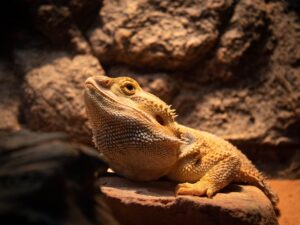
Diagnosis and Treatment Options
Importance of seeking veterinary assistance
When faced with the possibility of bearded dragon prolapse, it is crucial to seek immediate veterinary assistance. A reptile veterinarian possesses the expertise and specialized knowledge required to accurately diagnose the condition and recommend appropriate treatment options.
Attempting to address this issue without professional guidance can exacerbate the situation, leading to further complications or even endangering the life of your beloved pet. Remember, a timely consultation with a reptile veterinarian is paramount in ensuring the well-being and recovery of your bearded dragon.
Diagnostic procedures used to confirm prolapse
To confirm the presence of bearded dragon prolapse, veterinarians employ various diagnostic techniques tailored specifically for these fascinating reptiles. The primary method involves conducting a thorough physical examination.
By carefully examining the vent area, a reptile veterinarian can visually identify any tissue protrusion or abnormalities indicative of prolapse. In cases where physical examination alone may not provide sufficient information, additional diagnostic tools may be utilized.
Radiographs (X-rays) are commonly employed to assess internal structures and determine if there are any underlying causes contributing to prolapse. Ultrasounds may also be used as an alternative imaging technique, allowing for more detailed visualization of organs and tissues.
Non-surgical treatment options
For mild cases of bearded dragon prolapse, non-surgical treatment options may suffice in resolving the condition effectively. One such approach is manual reduction with lubrication.
With utmost care and precision, a trained veterinarian gently pushes back the protruded tissue into its rightful position within the cloaca while applying lubricants to facilitate smooth retraction. Supportive devices like prolapse boots can also aid in successfully managing less severe instances of prolapse.
These specially designed boots gently apply pressure around the vent area, aiding in tissue retraction by promoting natural healing processes. Close monitoring by a veterinarian is crucial throughout the treatment period to ensure progress and make any necessary adjustments.
Surgical intervention for severe cases
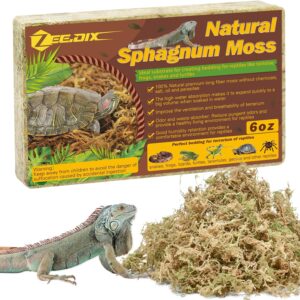 In severe cases of bearded dragon prolapse, surgical intervention becomes necessary to rectify the condition. Surgery is generally performed under general anesthesia to ensure the animal’s comfort and safety. The specific techniques utilized during surgery depend on the severity of prolapse and any associated complications.
In severe cases of bearded dragon prolapse, surgical intervention becomes necessary to rectify the condition. Surgery is generally performed under general anesthesia to ensure the animal’s comfort and safety. The specific techniques utilized during surgery depend on the severity of prolapse and any associated complications.
One common surgical technique used is called purse-string closure, which involves suturing the vent opening partially closed to prevent further prolapse while preserving proper function. In more complex cases, tissue resection may be required, where a portion of protruded tissue is carefully excised before suturing the vent area.
Post-operative care plays a vital role in ensuring successful recovery. This typically involves providing pain management, administering antibiotics as needed, and maintaining a clean environment to minimize infection risks.
Regular follow-up appointments with the reptile veterinarian are essential to monitor healing progress and address any potential complications that may arise during this delicate phase. Prompt veterinary attention is crucial when facing bearded dragon prolapse.
Accurate diagnosis through physical examination and diagnostic procedures such as radiographs or ultrasounds helps determine appropriate treatment options. Non-surgical approaches like manual reduction with lubrication or supportive devices can effectively treat milder cases.
However, in severe instances, surgical intervention may be necessary through techniques such as purse-string closure or tissue resection followed by meticulous post-operative care for optimal recovery. Remember that seeking professional assistance ensures proper management of this condition and maximizes your bearded dragon’s chances of returning to good health.
Prevention Measures
Creating an Optimal Habitat for Bearded Dragons
When it comes to preventing bearded dragon prolapse, providing an optimal habitat is of utmost importance. A well-designed habitat will ensure that your beloved reptile remains healthy and free from the risk of prolapse. Start by selecting an appropriately sized enclosure that allows your bearded dragon to stretch and move comfortably.
The enclosure should also have proper ventilation to maintain fresh air circulation. Furthermore, maintaining appropriate temperature and humidity levels is crucial.
Bearded dragons are ectothermic creatures, meaning they rely on external heat sources to regulate their body temperature. Provide a basking area with a temperature gradient, allowing your reptile to adjust its body temperature as needed.
A basking spot should reach around 100-110°F (38-43°C), while the cooler side of the enclosure should hover around 80-85°F (27-29°C). Be sure to use reliable thermometers and thermostats for accurate readings.
Maintaining a Balanced Diet
A nutritious diet plays a significant role in preventing bearded dragon prolapse. These reptiles require a varied diet consisting of live insects, leafy greens, vegetables, and occasional fruits. Providing proper nutrition ensures their overall health and reduces the likelihood of digestive issues that can lead to prolapse.
Offering gut-loaded insects such as crickets or dubia roaches provides essential nutrients like calcium and vitamins necessary for bone health. Leafy greens such as collard greens or dandelion greens offer fiber and additional vitamins.
Vegetables like butternut squash or bell peppers can provide variety while supplying essential nutrients. It’s essential not to overfeed your bearded dragon, as obesity can contribute to health problems including prolapse.
Feed them appropriate portion sizes based on their age and size, ensuring they have enough food without excess. Also, remember to provide fresh water daily to keep them hydrated.
To sum up bearded dragons prolapse
Bearded dragon prolapse is a condition that can be prevented through proper care and attention to their habitat and diet. By creating an optimal habitat with suitable temperature and humidity levels, you help maintain the overall health of your bearded dragon and reduce the risk of prolapse. Additionally, a balanced diet consisting of live insects, leafy greens, vegetables, and occasional fruits is essential for their well-being.
Providing appropriate nutrition prevents digestive issues that can contribute to prolapse. By implementing these prevention measures, you can ensure your bearded dragon leads a happy and healthy life.
Remember, being proactive in preventing bearded dragon prolapse not only keeps your pet safe but also strengthens the bond between you. With proper care and attention to their needs, your bearded dragon will thrive as a majestic companion in your home for years to come.
Further Reading:
- Carolina Custom Cages Terrarium Review
- 8 Best Basking Rocks for Beardie: What Is the Best Choice?
- 10 Best Thermometers for Beardie: How to Choose the Best One?
- 5 Best Beardie Lighting Setups for Beardie Lovers
- 9 Best Heat Lamps for Beardie: Natural Habitat Provided

